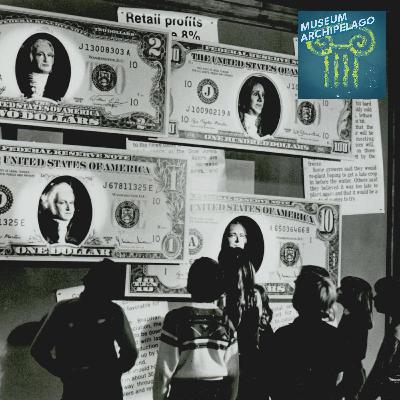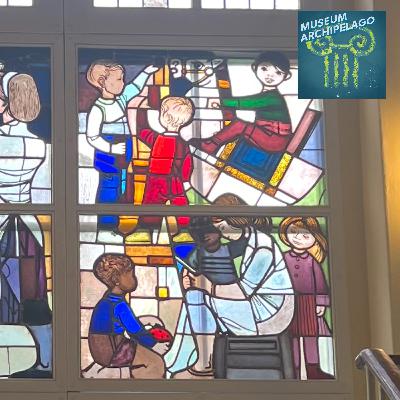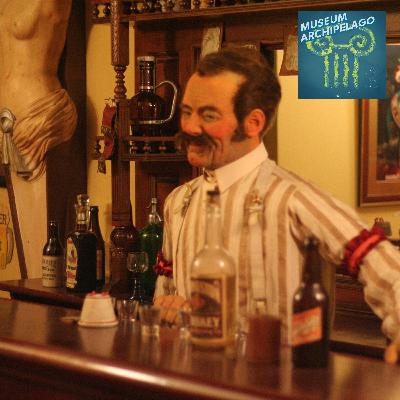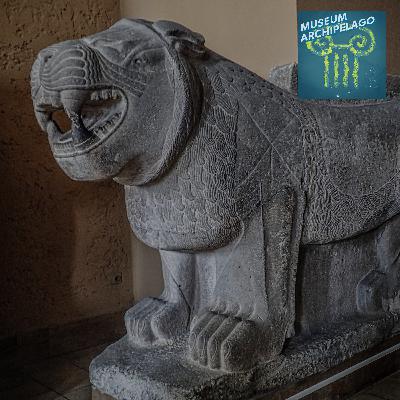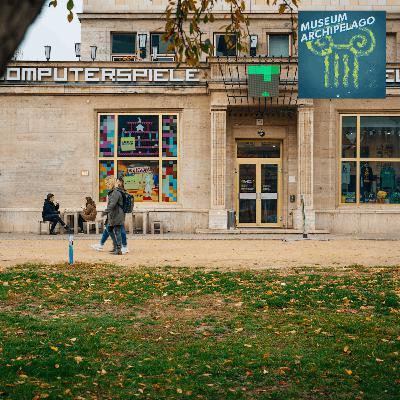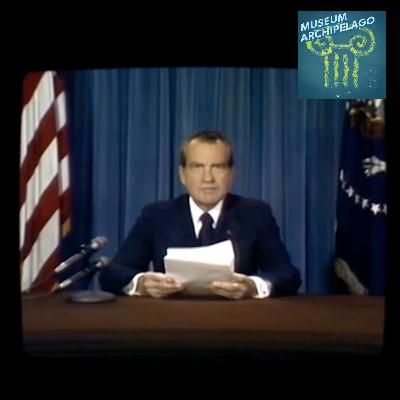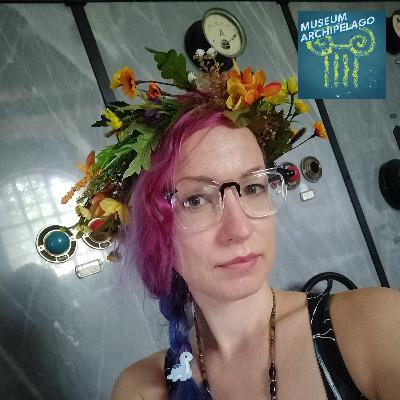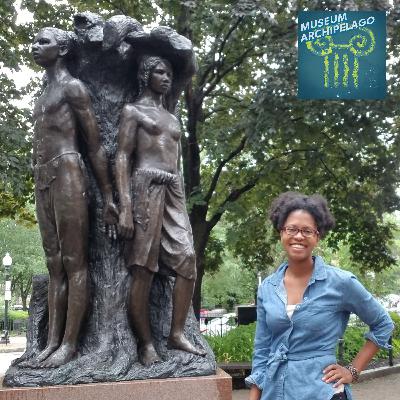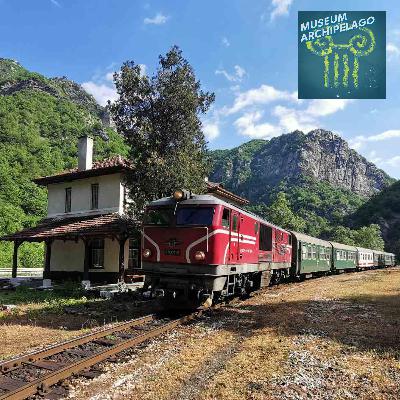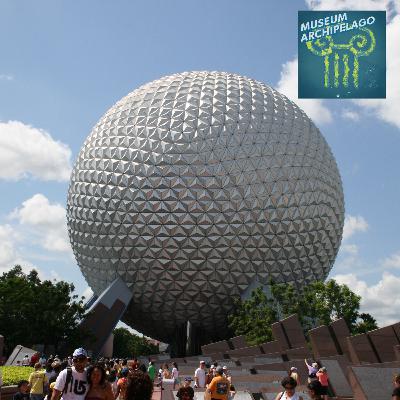109. The Rise and Fall of Enterprise Square, USA
Description
For the last few decades of the 20th century, if you visited Oklahoma City, Oklahoma, you could have been serenaded by a barbershop quartet of audio-animatronic portraits of America's founders as framed on U.S. currency. This was one of the many exhibits at Enterprise Square, USA, a high-tech museum dedicated to teaching children about Free Market Economics. The museum, which found itself out of money almost before it opened, shut down in 1999.
Barrett Huddleston first encountered these exhibits as a wide-eyed elementary school student in the 1980s, mesmerized by the talking puppets, giant electronic heads, and interactive displays that taught how regulation stifled freedom. Years later, he returned as a tour guide during the museum's final days, maintaining those same animatronics with duct tape and wire cutters, and occasionally being squeezed inside the two-dollar bill to repair Thomas Jefferson.
He joins us to explore this collision of education, ideology, and visitor experience, and how the former museum shapes his own approach to teaching children today.
Cover Image: Children watch audio-animatronic portraits of America's founders, as framed on U.S. currency, sing a song about freedom. [Photograph 2012.201.B0957.0912] hosted by The Gateway to Oklahoma History
Topics and Notes
- 00:00 Intro
- 00:15 Buzludzha Again
- 00:46 Enterprise Square, USA
- 01:32 Barrett Huddleston
- 02:05 The Origins and Purpose of Enterprise Square
- 03:09 The Boom and Bust of Oklahoma's Economy
- 05:47 The Disney Connection and Animatronics
- 07:54 The Decline of Enterprise Square
- 11:42 Huddleston's Reflections on Education
- 13:41 Outro | Join Club Archipelago 🏖
DIVE DEEPER WITH CLUB ARCHIPELAGO 🏖️
Start with a 7-day free trial. Cancel anytime.
Your Club Archipelago membership includes:
- 🎙️Access to a private podcast that guides you further behind the scenes of museums. Hear interviews, observations, and reviews that don't make it into the main show.
- 🎟️ Archipelago at the Movies, a bonus bad-movie podcast exclusively featuring movies and other pop culture that reflect the museum world back to us.
- ✨A warm feeling knowing you're helping make this show possible.
Transcript
Below is a transcript of Museum Archipelago episode 109. For more information on the people and ideas in the episode, refer to the links above.
<input id="collapsible" class="toggle" type="checkbox">
<label for="collapsible" class="lbl-toggle">View Transcript</label>
Welcome to Museum Archipelago. I'm Ian Elsner. Museum archipelago guides you through the rocky landscape of museums. Each episode is rarely longer than 15 minutes. So let's get started.
Buzludzha comes up a lot on Museum Archipelago. The monument was built in 1981 to look like a futuristic flying saucer parched high on Bulgarian mountains. Every detail of the visitor experience was designed to impress, to show how Bulgarian communism was the way of the future. Once inside, visitors were treated to an immersive light show, where the mosaics of Marx and Lenin and Bulgarian partisan battles were illuminated at dramatic moments during a pre-recorded narration.
But within a year of Buzludzha welcoming its first guests, all the way across the world in Oklahoma City, Oklahoma, another museum opened to promote the exact opposite message. And it even had its own flying saucer connection.
Barrett Huddleston: The framing device of the museum is you have these two alien puppets that crash down in Oklahoma City, Oklahoma, and they need to get fuel for their spaceship so they can go back. I saw these animatronic puppets and I was like, oh, well this is just like Disney World, except they're talking about having to commodify their space technology so they can buy gold to put in their spaceship so they can get back to their planet or whatever.
This is Barrett Huddleston, who first visited Enterprise Square, USA as an elementary school student in the mid-1980s, and later worked there as a tour guide.
Barrett Huddleston: Hi, my name is Barrett Huddleston. I am an educational enrichment provider. I own a business called Mad Science of Central Oklahoma and Finer Arts of Oklahoma. I travel all over my state and a few others, delivering STEAM based workshops and assemblies to elementary school students. But In this instance, I also worked as a tour guide for Enterprise Square USA for over two years.
The story of Enterprise Square, USA begins in a boom, actually a few overlapping booms. In the late 1970s, oil had been found in the nearby Anadarko Basin and energy companies and money were rushing into Oklahoma City. As Sam Anderson puts it in his excellent book Boom Town, which is also where I first learned about this museum:
Excerpt from Boom Town: “Capitalism had blessed Oklahoma City, and the city wanted to express its thanks. At the height of the boom, local businessmen pooled their money to create a brand-new attraction that, even by the standards of Oklahoma City, was spectacularly strange. It was an interactive museum, a kind of secular shrine to free enterprise, designed to help local children appreciate the sanctity of capitalism.”
Barrett Huddleston: And I think at that point in the state of Oklahoma, it was one out of every six or eight people were either directly or indirectly employed by big energy in one respect. Now it's way, way, way lower than that. And we've got a much more diversified economy. But Enterprise Square was also attached to an evangelical Christian university at a time where there was a lot of deregulation in education because of the Reagan administration. So if you were evangelical. And if you were pro laissez faire capitalism then you were definitely going to get the kind of funding that it would take from the donor class to build a museum for children that was pro free market.
Huddleston also turned me on to a different kind of boom – the baby boomer’s children were beginning to go to college around this time too. Echo booms are always more diffuse than the original boom, since people choose to have children at different times. But pretty much any college or university in the country, including Oklahoma Christian University, which hosted the museum on their campus, could expect increasing enrollment year after year no matter what they did.
Barrett Huddleston: Enterprise Square opened in 1982, and I believe as early as first, second, or third grade, school trips were being taken there, and I must have been about seven or eight years old. So much of my childhood education was, sort of, that curriculum that was created between the Great Society and the Reagan administration. So a lot of the education that I got as hand me down education from the previous generation was very pro regulation, very pro safe market approaches, et cetera, et cetera.
And I think that by the time that Enterprise Square came along, it was like, well no, we need to, we need to unlearn what these kids have learned in school and then retrain them about how bad regulation can be and how wonderful a free market can be and how they need to really pay attention to the weather forecast if they're going to make their own lemonade stands and that kind of thing.
And it’s clear from the contemporary news coverage, like this one from Action 4 in Oklahoma City, that Enterprise Square, USA represented something different.
Contemporary News Coverage: This is the first group to tour the nation's only museum devoted solely to free enterprise. The 15 million Enterprise Square, USA has been six years in the making. Every penny and minute of time spent shows up in a big way on the inside. It's an economic learning experience. And with a touch of animation. It's Disneyland in a classroom. But there’s more. These digital readouts update all sorts of nationwide figures, minute by minute, on employment, taxes, traffic deaths, and so on. Dan Slocum, Action 4 at Enterprise Square.
Disney comes up a lot in these discussions about Enterprise Square, USA. Epcot, Disney’s second park in Florida, opened just one month before Enterprise Square in October 1982.
Barrett Huddleston: I think at that point, one of the mechanics that designed Enterprise Square was an Imagineer from Epcot Center.
Even the museum’s name evokes “Main Street, USA”, a Disney themed area that’s an amalgamation of feelings or memory or history rather than a specific place. In the late 1950s, eyeing expansion of his Disneyland park, Walt Disney developed -- but never built -- a spur off of Main Street, USA that was to be called Edison Square, dedicated to all things progress and i

